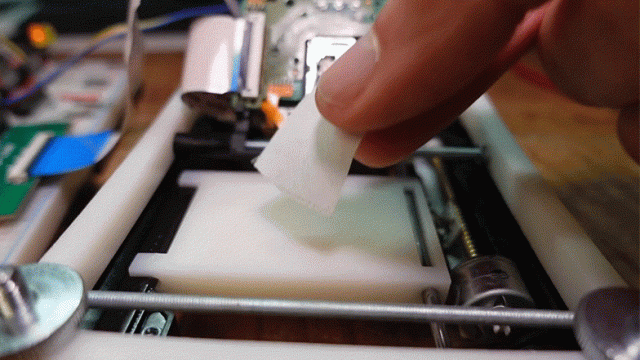Optical microscopes typically max out at anywhere between 500x to 1,500x magnification, at which point you need to switch to a scanning microscope to zoom any closer. They come with some functional compromises, and they’re not cheap, often costing tens of thousands of dollars, unless you’re clever enough to repurpose the optics in an old Blu-Ray drive into a surprisingly effective laser microscope.
In a way, CD-ROM and Blu-Ray drives already function like microscopes, using lasers to read the microscopic dots on the surface of a CD or DVD. In the case of a Blu-Ray drive, an ultra precise blue (technically closer to violet in colour) laser with a wavelength of 405 nanometres is focused on the surface of a disc, and how effectively that light is reflected back to the drive’s optical pickup unit determines whether a one or a zero has been detected.
But the sensors in the optical pickup unit can actually measure a wider range of light intensities — not just on or off — which facilitates a Blu-Ray drive’s error correction capabilities, and allows for the hardware to be repurposed for other uses.
YouTube’s Doctor Volt repurposed a Blu-Ray drive, which are now easy to find on the cheap in the era of streaming content, to build a simple scanning laser microscope. A couple of custom-designed and manufactured plastic parts were added to the mix to create a scanning bed for a sample that could move back in forth in one direction, while the laser itself shifted back and forth in the other.
Unlike an optical microscope, where the entirely of an object is imaged at once, a scanning laser microscope takes light intensity measurements in increments, moving across an object in a grid and assembling a magnified image pixel by pixel. In this case, given the limitations of the Blu-Ray drive’s spindle, which moves the sample being viewed back and forth, the image is assembled from 16,129 measurements (a 127×127 grid) and then scaled up to a 512×512 image.
A browser-based user interface written in Java allows focus adjustments and the scanning speed of the microscope to be modified, but at the slowest possible speed, the results are surprisingly good and recognisable. Certainly not comparable to what you’d get from lab equipment that costs tens of thousands of dollars, but for a re-purposed Blu-Ray drive you could get for less than $US20 ($28) on eBay, this is an impressive hack.
Just be careful around those lasers.
